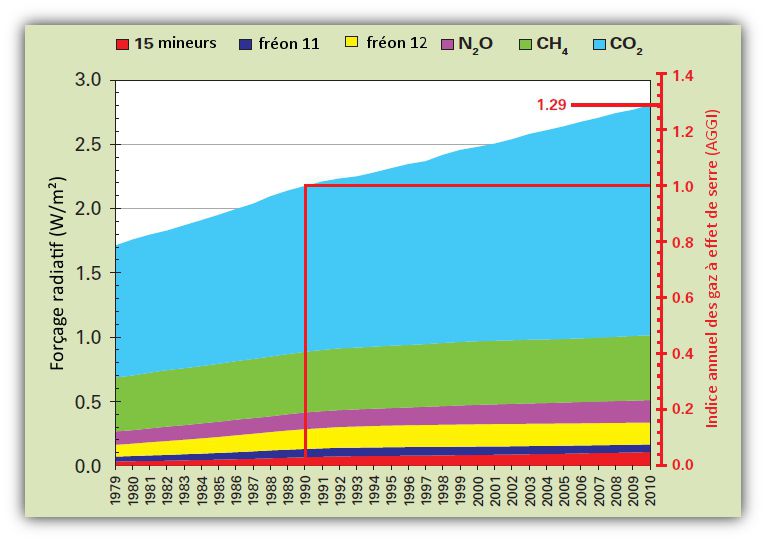-
 SDH
SDH
-
 Rover
Rover
-
 Macrophyte
Macrophyte
-
 Pascal
Pascal
-
 Inductive effect
Inductive effect
-
 Breast milk
Breast milk
-
 Guanase
Guanase
-
 .RAM
.RAM
-
 Holophonics
Holophonics
-
 M101
M101
-
 Intravenous
Intravenous
-
 Ependymoma
Ependymoma
-
 IAM
IAM
-
 Endeavour
Endeavour
-
 Meteorite crater
Meteorite crater
-
 Dyslexia
Dyslexia
-
 Column
Column
-
 Indium
Indium
-
 Backdoor
Backdoor
-
 Avian influenza
Avian influenza
-
 M106
M106
-
 Therophyte
Therophyte
-
 Aphotic zone
Aphotic zone
-
 Plankton
Plankton
-
 Doublet
Doublet
-
 Hubble's law
Hubble's law
-
 Argos
Argos
-
 Nebula
Nebula
-
 Melanism
Melanism
-
 Decarbonation
Decarbonation
Radiative forcing
According to the definition provided by the IPCC (Intergovernmental Panel on Climate Change), radiative forcing is " the equilibrium between incoming solar radiation and infrared radiation emissions leaving the atmosphere ". It is measured in W/m².
The IPCC uses this term to evaluate the impact of different factors (CO2 emissions, albedo, aerosols, etc.) on the energy budget of the Earth.
Negative and positive radiative forcing
The Earth receives energy in the form of heat, through the sun's rays. Certain factors, typically greenhouse effect gases, tend to absorb infrared radiation. Thus, the more they are present in the atmosphere, the more the climate warms. Radiative forcing of greenhouse effect gas is therefore positive.
On the other hand, aerosols tend to reflect solar rays back to their emitter, which causes the Earth to cool. In this case, radiative forcing is negative.
If the overall radiative forcing is positive, the Earth tends to warm. This is what is currently happening. In the opposite case, it cools.
 As the World Meteorological Organisation notes, radiative forcing imputable to greenhouse effect gas continues to increase. © OMM 2011
As the World Meteorological Organisation notes, radiative forcing imputable to greenhouse effect gas continues to increase. © OMM 2011
Latest
Fill out my online form.



